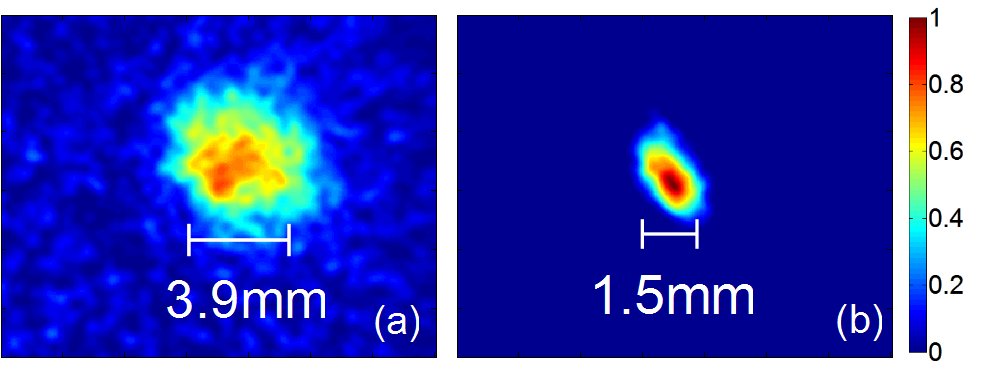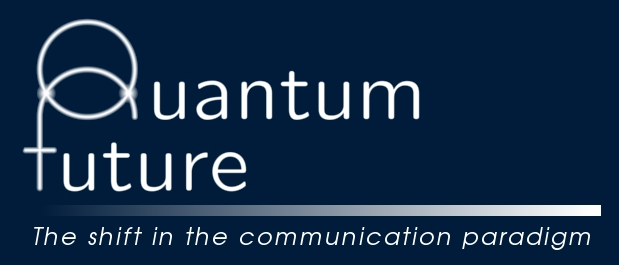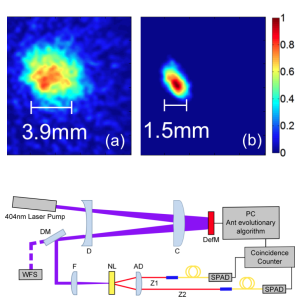
M. Minozzi1, S. Bonora2, A. V. Sergienko3, G. Vallone1 and P. Villoresi1
Optics Letters 38, 489 (2013)
DOI: 10.1364/OL.38.000489
1Department of Information Engineering, University of Padova, via Gradenigo 6/B, 35131 Padova, Italy
2CNR-INFM LUXOR Laboratory for Ultraviolet and X-ray Optical Research, University of Padova, via Gradenigo 6, 35131 Padova, Italy
3Dept. of Electrical & Computer Engineering, Boston University, Boston, Massachusetts 02215
We present an efficient method to control the spatial modes of entangled photons produced through SPDC process. Bi-photon beam propagation is controlled by a deformable mirror that shapes a 404nm CW diode laser pump interacting with a nonlinear BBO type-I crystal. Thanks to adaptive optical system, the propagation of 808nm SPDC light produced is optimized over a distance of 2m. The whole system optimization is carried out by a feedback between deformable mirror action and entangled photon coincidence counts.
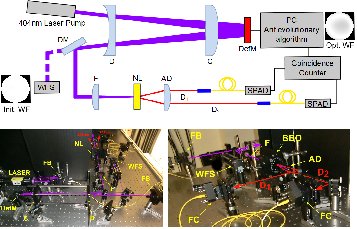
The experimental setup is shown on the left. The 404nm laser passes through a Galilean telescope (lenses D and C, with fD=-250mm, fC=500mm). After reflecting from the deformable mirror (DefM), the beam is focused onto a non-linear crystal (NL) by the lens F (fF=287mm). A dichroic mirror (DM) sends 10% of the pump to a wavefront sensor (WFS) to its spatial shape evaluation. The 808nm SPDC photons are collimated by an achromatic doublet AD (fAD=75mm) and sent to fiber couplers FC after D1=0.5m and D2=2m of free space propagation. Finally, SPDC light is measured by two SPAD detectors and coincidences are evaluated with coincidence counter. The outcome is utilized in a feedback loop with deformable mirror by Antcolonyalgorithm.
The optimization algorithm is able to find the pump wavefront, that maximizes coincidence counting rate, whose Zernike components are shown in Fig 1.
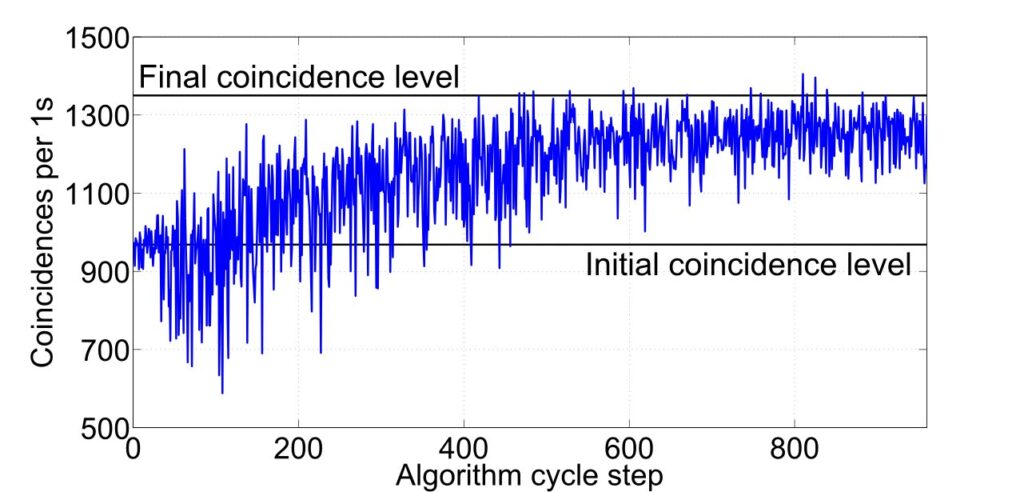
The process begin with a flat wavefront. Then, mirror actuators are moved randomly and only configurations which provide an increase in coincidences are awarded. Over time, the optimum configuration is reached, following an exponential asymptotical growth as shown in Fig. 2.
In addition, the rise in coincidences results in the correction of SPDC beam divergence, so as to obtain “diffraction-free” beams over a distance of 2m. Consequently, fiber coupling is improved by 40% and SPDC beam spot is substantially reduced as shown in Fig. 3.
